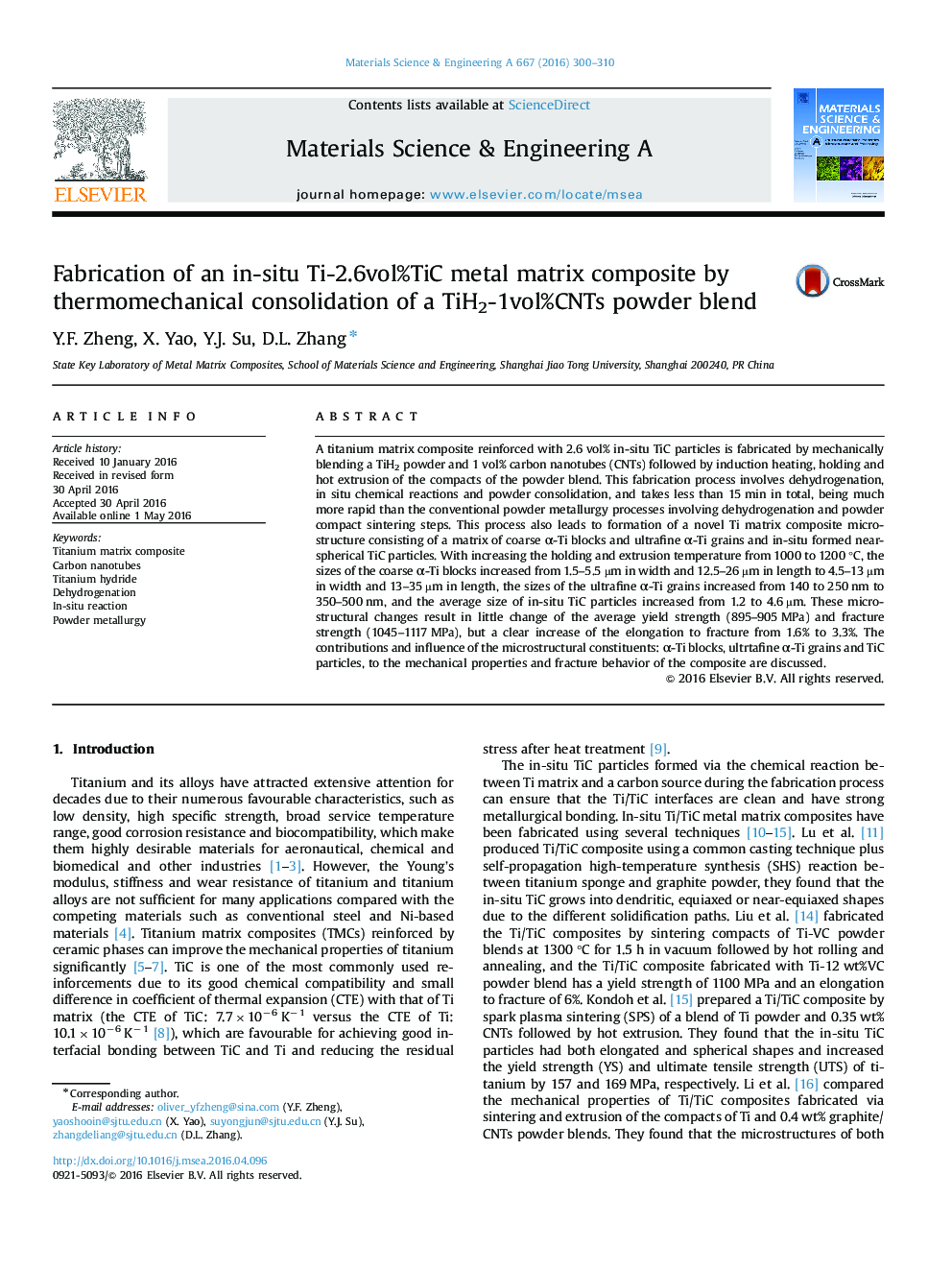| Article ID | Journal | Published Year | Pages | File Type |
|---|---|---|---|---|
| 1573313 | Materials Science and Engineering: A | 2016 | 11 Pages |
Abstract
A titanium matrix composite reinforced with 2.6 vol% in-situ TiC particles is fabricated by mechanically blending a TiH2 powder and 1 vol% carbon nanotubes (CNTs) followed by induction heating, holding and hot extrusion of the compacts of the powder blend. This fabrication process involves dehydrogenation, in situ chemical reactions and powder consolidation, and takes less than 15 min in total, being much more rapid than the conventional powder metallurgy processes involving dehydrogenation and powder compact sintering steps. This process also leads to formation of a novel Ti matrix composite microstructure consisting of a matrix of coarse α-Ti blocks and ultrafine α-Ti grains and in-situ formed near-spherical TiC particles. With increasing the holding and extrusion temperature from 1000 to 1200 °C, the sizes of the coarse α-Ti blocks increased from 1.5-5.5 µm in width and 12.5-26 µm in length to 4.5-13 µm in width and 13-35 µm in length, the sizes of the ultrafine α-Ti grains increased from 140 to 250 nm to 350-500 nm, and the average size of in-situ TiC particles increased from 1.2 to 4.6 µm. These microstructural changes result in little change of the average yield strength (895-905 MPa) and fracture strength (1045-1117 MPa), but a clear increase of the elongation to fracture from 1.6% to 3.3%. The contributions and influence of the microstructural constituents: α-Ti blocks, ultrtafine α-Ti grains and TiC particles, to the mechanical properties and fracture behavior of the composite are discussed.
Keywords
Related Topics
Physical Sciences and Engineering
Materials Science
Materials Science (General)
Authors
Y.F. Zheng, X. Yao, Y.J. Su, D.L. Zhang,
